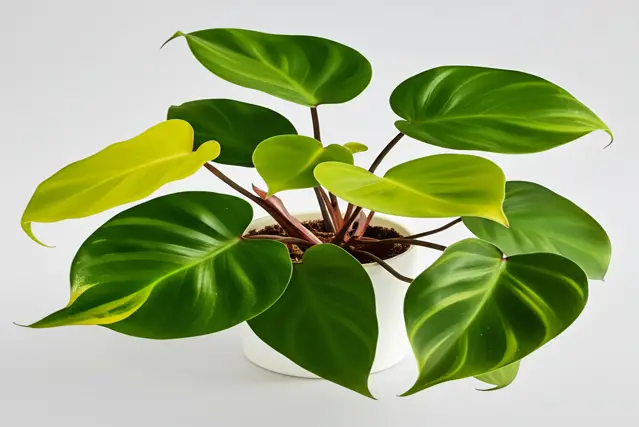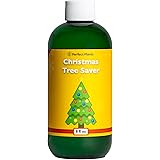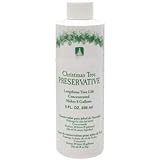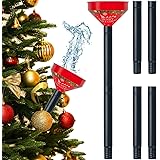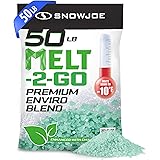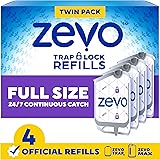Philodendrons, with their lush foliage and relatively easy-going nature, have cemented their status as a favorite among houseplant enthusiasts. From the classic Heartleaf Philodendron to the dramatic Split-Leaf Philodendron (often mistakenly called a Monstera), these plants offer a touch of the tropics to any indoor space.
But while they’re generally considered low-maintenance, understanding their specific needs is crucial for ensuring they thrive. This comprehensive guide, updated for 2025, provides you with everything you need to know about philodendron care, from selecting the right variety to troubleshooting common problems.
We’ll delve into the latest trends, relevant statistics, and even touch upon emerging regulations impacting plant ownership and trade.
What is a Philodendron? Understanding the Basics
Before we dive into the nitty-gritty of care, let’s define what exactly constitutes a philodendron. The name “Philodendron” comes from the Greek words “philo” (love) and “dendron” (tree), reflecting their natural tendency to climb trees in their native tropical environments. Belonging to the Araceae family, philodendrons are incredibly diverse, encompassing hundreds of different species with varying leaf shapes, sizes, and growth habits.
Types of Philodendrons: A Quick Overview
The sheer variety of philodendrons can be overwhelming, so let’s break down some of the most popular types:
- Heartleaf Philodendron (Philodendron hederaceum): The quintessential philodendron, known for its heart-shaped leaves and trailing growth habit.
- Split-Leaf Philodendron (Monstera deliciosa): While technically a *Monstera*, it’s often mistaken for a philodendron due to its similar appearance and care requirements. Its iconic split leaves make it a statement piece.
- Brasil Philodendron (Philodendron hederaceum ‘Brasil’): A variegated version of the Heartleaf Philodendron, featuring splashes of lime green and yellow on its leaves.
- Pink Princess Philodendron (Philodendron erubescens ‘Pink Princess’): Highly sought after for its dark green leaves speckled with vibrant pink variegation.
- Birkin Philodendron (Philodendron ‘Birkin’): A relatively new cultivar with striking white pinstripes on its dark green leaves. Its variegation patterns vary greatly, making each plant unique.
- Xanadu Philodendron (Philodendron xanadu): A non-climbing philodendron with deeply lobed leaves, creating a bushy and compact form.
- Moonlight Philodendron (Philodendron ‘Moonlight’): Known for its bright, chartreuse new growth that gradually matures to a darker green.
- Florida Ghost Philodendron (Philodendron ‘Florida Ghost’): Another highly desirable variety, characterized by its pale, almost white new leaves that eventually turn green as they age.
- Rojo Congo Philodendron (Philodendron ‘Rojo Congo’): Features striking reddish-bronze new growth that contrasts beautifully with its mature green foliage.
- Prince of Orange Philodendron (Philodendron ‘Prince of Orange’): Similar to Rojo Congo, but with new growth in shades of bright orange.
This is just a small sampling of the philodendron family. As you delve deeper into the world of houseplants, you’ll discover even more fascinating and unique varieties.
Keep an eye out for new hybrids and cultivars emerging each year, as plant breeders continue to develop exciting new additions to the philodendron lineup.
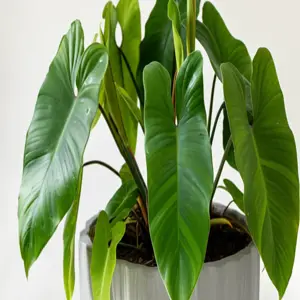
Philodendron Trends in 2025: What’s Hot?
The houseplant market continues to evolve, and certain trends are shaping the popularity of philodendrons in 2024. Here are a few key observations:
- Variegation Reigns Supreme: Variegated philodendrons, like the Pink Princess, Birkin, and Florida Ghost, remain highly sought after, driving up their prices. Collectors are always on the hunt for unique and stable variegation patterns.
- Focus on Rare and Unusual Species: As common varieties become more readily available, collectors are increasingly turning their attention to rarer and more unusual philodendron species. This includes plants like Philodendron spiritus-sancti (known for its extremely long and narrow leaves) and Philodendron melanochrysum (with its velvety, dark green leaves). However, ethical sourcing is becoming a growing concern with these rarer plants.
- Sustainability and Ethical Sourcing: Consumers are becoming more aware of the environmental and social impact of their plant purchases. There’s a growing demand for plants grown using sustainable practices and sourced from ethical suppliers. This includes avoiding plants collected from the wild, which can contribute to habitat destruction and species endangerment.
- Statement Plants for Interior Design: Large, mature philodendrons, particularly climbing varieties like the Monstera deliciosa (often grouped with philodendrons in the design world), are being used as statement pieces in interior design. These plants add a dramatic and tropical touch to any space.
- Tech Integration in Plant Care: Smart planters and plant monitors are becoming increasingly popular, providing real-time data on soil moisture, light levels, and temperature. While not essential for philodendron care, these tools can be helpful for beginners or those who want to optimize their plant’s environment.
According to recent market research, the global houseplant market is projected to reach \$[Insert Projected Market Value] by [Insert Year], with philodendrons contributing significantly to this growth. This indicates a continued strong interest in these plants and highlights the importance of understanding their care requirements.
Understanding Philodendron Growth Habits
Philodendrons exhibit different growth habits, which influences how you should care for them. Two main categories exist:
- Climbing Philodendrons: These plants naturally climb trees in the wild, using aerial roots to attach themselves to surfaces. Examples include Heartleaf Philodendron, Brasil Philodendron, and Pink Princess Philodendron. They benefit from support structures like moss poles or trellises.
- Non-Climbing (Self-Heading) Philodendrons: These philodendrons grow upright and do not climb. Examples include Xanadu Philodendron, Moonlight Philodendron, and Rojo Congo Philodendron. They form a dense, bushy shape.
Essential Philodendron Care: A Step-by-Step Guide
Now that we’ve covered the basics, let’s delve into the essential aspects of philodendron care.
Light Requirements: Finding the Sweet Spot
Philodendrons generally thrive in bright, indirect light. Direct sunlight can scorch their leaves, while insufficient light can lead to leggy growth and reduced variegation (in variegated varieties). The ideal location is near an east-facing window or a few feet away from a south- or west-facing window.
Here’s a more detailed breakdown:
- Bright, Indirect Light: This is the sweet spot for most philodendrons. Imagine the light filtering through a sheer curtain – that’s the kind of intensity they prefer.
- Medium Light: Philodendrons can tolerate medium light conditions, but their growth may be slower and less vigorous. If your plant is getting insufficient light, you might notice smaller leaves, longer spaces between leaves (etiolation), and a loss of variegation.
- Low Light: While philodendrons are often touted as low-light plants, they won’t thrive in very dark conditions. They might survive, but they’ll likely become leggy and produce very little new growth. Supplemental lighting is recommended if you have limited natural light.
- Direct Sunlight: Avoid prolonged exposure to direct sunlight, especially during the hottest parts of the day. Direct sun can cause sunburn, characterized by bleached or brown spots on the leaves. Morning sun is generally less intense and can be tolerated by some philodendron varieties.
Real-World Example: A Heartleaf Philodendron placed directly in a south-facing window without any遮光 (zhē guāng – shading in Chinese) developed brown, crispy spots on its leaves within a week. Moving it to a spot a few feet away from the window and adding a sheer curtain resolved the issue.
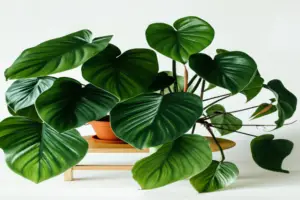
Watering: Achieving the Right Balance
Overwatering is one of the most common mistakes in philodendron care. These plants prefer to dry out slightly between waterings. The best approach is to check the soil moisture before watering.
Here’s how to water your philodendron correctly:
- Check the Soil Moisture: Use your finger to feel the top inch or two of soil. If it feels dry, it’s time to water. You can also use a moisture meter for more accurate readings.
- Water Thoroughly: When you water, saturate the soil until water drains out of the drainage holes. This ensures that the entire root system is moistened.
- Allow Excess Water to Drain: Never let your philodendron sit in standing water, as this can lead to root rot. Empty the saucer beneath the pot after watering.
- Watering Frequency: Watering frequency will vary depending on factors such as the size of the pot, the type of potting mix, the temperature, and the humidity. Generally, you’ll need to water more frequently during the growing season (spring and summer) and less frequently during the dormant season (fall and winter).
- Water Quality: Use filtered or dechlorinated water whenever possible. Tap water can contain chlorine and other chemicals that can be harmful to philodendrons over time. Let tap water sit out for 24 hours to allow chlorine to evaporate.
Real-World Example: A Pink Princess Philodendron that was watered twice a week, regardless of soil moisture, developed yellowing leaves and stunted growth. Reducing the watering frequency to once every 10 days, allowing the soil to dry out slightly, resolved the problem and promoted new growth.
Soil and Potting Mix: Providing a Healthy Foundation
Philodendrons need well-draining soil that retains some moisture. A good potting mix will provide adequate aeration for the roots, preventing them from becoming waterlogged.
Here’s what to look for in a potting mix:
- Well-Draining: The potting mix should allow excess water to drain easily.
- Moisture-Retaining: The potting mix should retain enough moisture to keep the roots hydrated between waterings.
- Aerated: The potting mix should provide good aeration for the roots, allowing them to breathe.
- Slightly Acidic pH: Philodendrons prefer a slightly acidic soil pH (around 6.0-6.5).
A typical philodendron potting mix consists of:
- Peat Moss or Coco Coir: These materials help retain moisture.
- Perlite or Vermiculite: These materials improve drainage and aeration.
- Orchid Bark: Adds chunkiness and improves drainage, especially beneficial for epiphytic philodendrons.
- Loam (optional): A small amount of loam can add weight and nutrients to the mix.
You can either purchase a pre-made potting mix specifically formulated for aroids (plants in the Araceae family) or create your own using the ingredients listed above. A good recipe is:
- 1 part peat moss or coco coir
- 1 part perlite
- 1 part orchid bark
Potting Considerations: Choose a pot with adequate drainage holes to prevent water from accumulating at the bottom.
The size of the pot should be appropriate for the size of the plant. Repot your philodendron every 1-2 years, or when it becomes root-bound (the roots circling around the inside of the pot). When repotting, choose a pot that is only slightly larger than the previous one.
Temperature and Humidity: Replicating Tropical Conditions
Philodendrons are native to tropical rainforests, so they prefer warm temperatures and high humidity. However, they’re relatively adaptable and can tolerate a range of conditions.
Here’s a breakdown of ideal temperature and humidity ranges:
- Temperature: Philodendrons thrive in temperatures between 65°F and 80°F (18°C and 27°C). Avoid exposing them to temperatures below 55°F (13°C), as this can damage the plant.
- Humidity: Philodendrons prefer humidity levels above 60%. Low humidity can cause leaf browning and crispy edges.
Here are some ways to increase humidity around your philodendron:
- Use a Humidifier: A humidifier is the most effective way to increase humidity levels in your home.
- Group Plants Together: Plants release moisture into the air through transpiration. Grouping plants together creates a more humid microclimate.
- Place the Plant on a Pebble Tray: Fill a tray with pebbles and water, and place the plant on top. As the water evaporates, it will increase the humidity around the plant. Make sure the pot isn’t sitting directly in the water to avoid root rot.
- Mist the Plant: Misting the plant regularly can temporarily increase humidity. However, avoid over-misting, as this can create conditions that favor fungal growth. Misting is less effective than other methods, as the humidity increase is short-lived.
Real-World Example: A Birkin Philodendron kept in a room with low humidity (around 30%) developed brown, crispy leaf edges. Placing the plant on a pebble tray and increasing the humidity to around 60% resolved the issue and promoted new, healthy growth.
Fertilizing: Providing Essential Nutrients
Philodendrons benefit from regular fertilization, especially during the growing season (spring and summer). Fertilizing provides the plant with the nutrients it needs to grow and thrive.
Here’s how to fertilize your philodendron correctly:
- Use a Balanced Fertilizer: Choose a balanced liquid fertilizer with an N-P-K ratio of 20-20-20 or similar.
- Dilute the Fertilizer: Always dilute the fertilizer according to the instructions on the label. Over-fertilizing can burn the roots and damage the plant.
- Fertilize Regularly During the Growing Season: Fertilize your philodendron every 2-4 weeks during the spring and summer.
- Reduce Fertilizing During the Dormant Season: Reduce fertilizing to once every 2-3 months during the fall and winter.
- Flush the Soil Periodically: Every few months, flush the soil with plain water to remove any accumulated salts from the fertilizer.
Real-World Example: A Moonlight Philodendron that was not fertilized at all showed slow growth and pale leaves. Fertilizing with a diluted liquid fertilizer every 3 weeks during the growing season resulted in a significant increase in growth and vibrant, healthy foliage.
Pruning: Shaping and Maintaining Your Philodendron
Pruning is an important part of philodendron care. It helps to maintain the plant’s shape, remove dead or damaged foliage, and encourage bushier growth.
Here’s how to prune your philodendron:
- Use Clean, Sharp Pruning Shears: Clean your pruning shears with rubbing alcohol to prevent the spread of disease.
- Remove Dead or Damaged Foliage: Cut off any dead, yellow, or brown leaves at the base of the stem.
- Prune Leggy Growth: If your philodendron is becoming leggy, you can prune back the stems to encourage bushier growth. Cut the stems back to just above a node (the point where a leaf emerges).
- Shape the Plant: You can prune your philodendron to maintain its desired shape.
Real-World Example: A Heartleaf Philodendron that had become very long and leggy was pruned back significantly. Within a few weeks, new growth emerged from the cut stems, resulting in a much bushier and fuller plant. The cuttings were also used for propagation.
Support Structures: Helping Climbing Philodendrons Thrive
Climbing philodendrons benefit from support structures like moss poles, trellises, or wooden planks. These structures provide the plant with something to climb on, mimicking their natural environment.
Here’s how to provide support for your climbing philodendron:
- Choose the Right Support Structure: Moss poles are a popular choice for philodendrons. They provide moisture and nutrients to the aerial roots, encouraging them to attach to the pole. Trellises and wooden planks are also good options.
- Secure the Plant to the Support Structure: Use plant ties or twine to gently secure the plant to the support structure.
- Maintain the Moss Pole (if applicable): Keep the moss pole moist by misting it regularly.
Real-World Example: A Monstera deliciosa (often treated like a philodendron) that was allowed to grow without any support became unruly and difficult to manage.
Providing a moss pole allowed the plant to climb vertically, creating a more manageable and aesthetically pleasing display. The aerial roots readily attached to the moss pole, providing additional support and nutrients.
Philodendron Propagation: Creating New Plants
Philodendrons are relatively easy to propagate, making it a great way to expand your plant collection or share your favorite varieties with friends. The most common methods of propagation are stem cuttings and air layering.
Stem Cuttings: A Simple and Effective Method
Propagating philodendrons from stem cuttings is a straightforward process that can be done in water or directly in soil.
Here’s how to propagate philodendrons from stem cuttings:
- Take a Cutting: Using clean, sharp pruning shears, take a cutting from a healthy stem. The cutting should be about 4-6 inches long and have at least one node (the point where a leaf emerges).
- Remove Lower Leaves: Remove the leaves from the bottom 1-2 inches of the cutting.
- Rooting in Water (Optional): Place the cutting in a glass or jar of water, ensuring that the node is submerged. Change the water every few days. Roots should begin to form in a few weeks.
- Rooting in Soil: Alternatively, you can plant the cutting directly in a well-draining potting mix. Keep the soil moist but not waterlogged.
- Provide Warmth and Humidity: Place the cutting in a warm, humid location. You can cover it with a plastic bag or humidity dome to increase humidity.
- Wait for Roots to Develop: It may take several weeks or even months for roots to develop. Once the roots are a few inches long, you can transplant the cutting into a pot.
Real-World Example: Cuttings taken from a Brasil Philodendron were placed in water. Within two weeks, roots began to emerge. Once the roots were about an inch long, the cuttings were planted in small pots filled with well-draining potting mix. They thrived and quickly grew into healthy new plants.
Air Layering: For Larger or More Difficult-to-Root Stems
Air layering is a more advanced propagation technique that can be used for larger or more difficult-to-root stems. It involves encouraging roots to form on a stem while it’s still attached to the parent plant.
Here’s how to propagate philodendrons using air layering:
- Select a Stem: Choose a healthy stem that is at least 6 inches long.
- Make a Cut: Use a clean, sharp knife to make a shallow cut in the stem, just below a node.
- Apply Rooting Hormone (Optional): Apply rooting hormone to the cut area to encourage root growth.
- Wrap with Moist Sphagnum Moss: Wrap the cut area with moist sphagnum moss.
- Cover with Plastic Wrap: Cover the sphagnum moss with plastic wrap to retain moisture. Secure the plastic wrap with tape or twine.
- Wait for Roots to Develop: It may take several weeks or even months for roots to develop within the moss. Keep the moss moist by misting it regularly.
- Cut and Plant: Once the roots are well-developed, cut the stem below the rooted area and plant it in a pot filled with well-draining potting mix.
Air layering is particularly useful for propagating larger philodendrons or those with thick stems that are difficult to root using traditional stem cuttings. It also reduces the stress on the parent plant compared to taking large cuttings.
Common Philodendron Problems and Solutions
Even with the best care, philodendrons can sometimes encounter problems. Here are some common issues and how to address them:
Yellowing Leaves
Yellowing leaves can indicate several problems:
- Overwatering: The most common cause. Reduce watering frequency and ensure the soil is well-draining. Check for root rot (*_see root rot section_*).
- Underwatering: If the soil is bone dry, the plant may be underwatered. Water thoroughly and adjust watering frequency as needed.
- Nutrient Deficiency: Yellowing, especially in older leaves, can indicate a lack of nutrients. Fertilize with a balanced fertilizer (*_see fertilizing section_*).
- Pest Infestation: Some pests, like spider mites, can cause yellowing leaves. Inspect the plant carefully for pests (*_see pest control section_*).
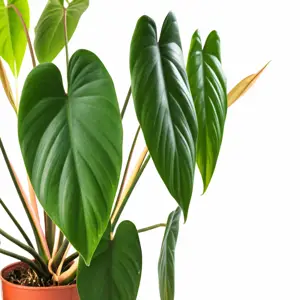
Brown Leaf Tips and Edges
Brown leaf tips and edges are often caused by:
- Low Humidity: Increase humidity around the plant (*_see humidity section_*).
- Dry Soil: Ensure the soil is consistently moist but not waterlogged.
- Salt Buildup: Flush the soil with plain water to remove accumulated salts from fertilizer.
- Fluoride Toxicity: Philodendrons are sensitive to fluoride in tap water. Use filtered or dechlorinated water.
Leggy Growth
Leggy growth (long spaces between leaves) indicates insufficient light. Move the plant to a brighter location (*_see light requirements section_*) or supplement with artificial light.
Root Rot
Root rot is a serious problem caused by overwatering and poor drainage. Symptoms include:
- Yellowing Leaves
- Wilting
- Stunted Growth
- Mushy, Brown Roots
- Foul Odor from the Soil
To treat root rot:
- Remove the Plant from the Pot: Gently remove the plant from its pot and inspect the roots.
- Trim Away Affected Roots: Use clean, sharp pruning shears to trim away any mushy, brown roots. Leave only healthy, firm, white roots.
- Repot in Fresh Soil: Repot the plant in a clean pot with fresh, well-draining potting mix.
- Reduce Watering: Water sparingly until the plant recovers.
In severe cases of root rot, the plant may not be salvageable. Prevention is key. Ensure proper drainage and avoid overwatering.
Pest Infestations
Philodendrons can be susceptible to various pests, including:
- Spider Mites: Tiny, spider-like pests that create webs on the leaves. Treat with insecticidal soap or neem oil. Increase humidity.
- Mealybugs: White, cottony pests that cluster on stems and leaves. Wipe them off with a cotton swab dipped in rubbing alcohol. Treat with insecticidal soap or neem oil.
- Scale: Small, armored pests that attach themselves to stems and leaves. Scrape them off with your fingernail or a cotton swab dipped in rubbing alcohol. Treat with insecticidal soap or neem oil.
- Thrips: Tiny, slender insects that feed on plant sap. They can cause silvery or distorted leaves. Treat with insecticidal soap or neem oil.
- Aphids: Small, soft-bodied insects that cluster on new growth. Wash them off with a strong stream of water. Treat with insecticidal soap or neem oil.
To prevent pest infestations, inspect your philodendron regularly and isolate any new plants before introducing them to your collection. Wipe down the leaves with a damp cloth periodically to remove dust and deter pests.
Leaf Spot Diseases
Leaf spot diseases are caused by fungal or bacterial pathogens. Symptoms include spots on the leaves that may be brown, black, or yellow. To prevent leaf spot diseases:
- Avoid Overwatering: Overwatering creates a humid environment that favors fungal growth.
- Provide Good Air Circulation: Good air circulation helps to prevent fungal growth.
- Remove Affected Leaves: Remove any leaves that show signs of leaf spot.
- Treat with Fungicide: In severe cases, you may need to treat the plant with a fungicide.
Always use fungicides and pesticides according to the manufacturer’s instructions. Consider using organic options whenever possible to minimize the impact on the environment and your health.
Philodendrons and Safety: Toxicity Considerations
It’s important to be aware that philodendrons are toxic to humans and pets if ingested. They contain calcium oxalate crystals, which can cause irritation and swelling of the mouth, throat, and stomach. Keep philodendrons out of reach of children and pets. If ingestion occurs, contact your local poison control center or veterinarian immediately.
Consider using hanging planters or placing philodendrons on high shelves to keep them away from curious pets and small children.
Regulations and Ethical Considerations: Buying and Selling Philodendrons
While philodendrons are widely available, it’s important to be aware of regulations and ethical considerations surrounding their purchase and sale, particularly for rare or endangered species.
- CITES (Convention on International Trade in Endangered Species of Wild Fauna and Flora): CITES is an international agreement that regulates the trade of endangered species. Some philodendron species may be listed under CITES, which means that their trade is restricted or prohibited. Always check the CITES status of any rare philodendron species before purchasing it.
- Plant Health Regulations: Many countries have plant health regulations that restrict the import and export of plants. These regulations are designed to prevent the spread of plant pests and diseases. When purchasing philodendrons from overseas, ensure that the seller complies with all relevant plant health regulations.
- Ethical Sourcing: Avoid purchasing philodendrons that have been collected from the wild, as this can contribute to habitat destruction and species endangerment. Choose plants that have been propagated from cultivated sources. Support nurseries and vendors that prioritize ethical and sustainable practices.
The illegal trade of rare and endangered plants is a growing concern. By being a responsible consumer and supporting ethical sourcing, you can help protect these vulnerable species and their habitats. Before purchasing a rare or expensive philodendron, research the seller and ask questions about the plant’s origin.
Troubleshooting Table
| Problem | Possible Cause | Solution |
|---|---|---|
| Yellowing Leaves | Overwatering, Underwatering, Nutrient Deficiency, Pest Infestation | Adjust watering, Fertilize, Inspect for pests |
| Brown Leaf Tips/Edges | Low Humidity, Dry Soil, Salt Buildup, Fluoride Toxicity | Increase humidity, Adjust watering, Flush soil, Use filtered water |
| Leggy Growth | Insufficient Light | Move to brighter location, Supplement with artificial light |
| Root Rot | Overwatering, Poor Drainage | Repot in fresh soil, Trim affected roots, Reduce watering |
| Pest Infestation | Various pests (spider mites, mealybugs, scale, thrips, aphids) | Treat with insecticidal soap or neem oil, Isolate infected plants |
FAQ: Your Philodendron Questions Answered
Here are some frequently asked questions about philodendron care:
How often should I water my philodendron?
Water when the top inch or two of soil feels dry. Watering frequency depends on factors like pot size, potting mix, temperature, and humidity. Usually, more often in spring/summer, and less in fall/winter.
What kind of light does my philodendron need?
Philodendrons prefer bright, indirect light. Avoid direct sunlight, which can scorch their leaves. They can tolerate medium light but may not thrive in very low light conditions.
What kind of soil should I use for my philodendron?
Use a well-draining potting mix that retains some moisture. A mix of peat moss or coco coir, perlite or vermiculite, and orchid bark is a good option. You can buy a pre-made aroid mix or make your own.
How do I increase humidity for my philodendron?
Use a humidifier, group plants together, place the plant on a pebble tray, or mist the plant regularly. Aim for humidity levels above 60%.
How often should I fertilize my philodendron?
Fertilize every 2-4 weeks during the growing season (spring and summer) with a balanced liquid fertilizer. Reduce fertilizing to once every 2-3 months during the dormant season (fall and winter).
How do I prune my philodendron?
Use clean, sharp pruning shears to remove dead or damaged foliage. You can also prune back the stems to encourage bushier growth. Cut the stems back to just above a node.
How do I propagate my philodendron?
Propagate philodendrons from stem cuttings or air layering. Stem cuttings can be rooted in water or directly in soil. Air layering involves encouraging roots to form on a stem while it’s still attached to the parent plant.
What are the common problems with philodendrons?
Common problems include yellowing leaves, brown leaf tips and edges, leggy growth, root rot, and pest infestations.
Are philodendrons toxic to pets?
Yes, philodendrons are toxic to humans and pets if ingested. They contain calcium oxalate crystals, which can cause irritation and swelling of the mouth, throat, and stomach.
Why are the leaves of my Pink Princess Philodendron reverting to green?
The pink variegation in Pink Princess Philodendrons is unstable. Insufficient light is the most common cause of reversion. Make sure your plant is receiving bright, indirect light. You can also prune back completely green leaves to encourage the plant to produce more pink variegation. However, there’s no guarantee that the pink will return, as it’s a genetic trait that can be lost over time. Some growers also attribute fertilizer imbalances (especially a lack of nitrogen) as contributing to reversion.
Conclusion: Final Thoughts on Philodendron Care
Caring for philodendrons is a rewarding experience. These versatile plants can add a touch of the tropics to your home and bring joy to any plant lover. By understanding their basic needs for light, water, soil, temperature, and humidity, you can create an environment where your philodendron will thrive for years to come.
Remember to stay vigilant for common problems and address them promptly to prevent them from escalating. As the houseplant market continues to evolve, stay informed about new trends, ethical sourcing practices, and emerging regulations. Your commitment to responsible plant ownership contributes to a healthier environment and a more sustainable future.
While this guide provides a comprehensive overview of philodendron care, remember that each plant is unique and may require slightly different care based on its specific variety and growing conditions. Observe your philodendron closely, pay attention to its cues, and adapt your care routine as needed. Join online plant communities and forums to connect with other philodendron enthusiasts, share your experiences, and learn from others.
Don’t be afraid to experiment and try new things, but always prioritize the well-being of your plant. With patience, dedication, and a little bit of love, you can cultivate a thriving philodendron collection that brings beauty and tranquility to your living space.
Happy growing!
Auto Amazon Links: No products found.
Perfect Plants Christmas Tree Saver 8oz. | Easy Use Xmas Tree Preserver Food | Have Healthy Green Christmas Trees All Holiday Season
$9.97 (as of December 10, 2025 04:06 GMT +00:00 - More info- Product prices and availability are accurate as of the date/time indicated and are subject to change. Any price and availability information displayed on [relevant Amazon Site(s), as applicable] at the time of purchase will apply to the purchase of this product.
Rocky Mountain Goods Christmas Tree Food - 8 oz Tree Preservative - Reduce Needle Drop - Greener Scent - Fir, Pine, Spruce Trees - Extend Tree Life
$9.95 (as of December 10, 2025 04:06 GMT +00:00 - More info- Product prices and availability are accurate as of the date/time indicated and are subject to change. Any price and availability information displayed on [relevant Amazon Site(s), as applicable] at the time of purchase will apply to the purchase of this product.
VICAMB 39.3 Inch Christmas Tree Watering Funnel,Christmas Tree Watering System Device,Long Tree Watering Funnel Spout for Indoor Outdoor Xmas Tree
$17.99 (as of December 10, 2025 04:06 GMT +00:00 - More info- Product prices and availability are accurate as of the date/time indicated and are subject to change. Any price and availability information displayed on [relevant Amazon Site(s), as applicable] at the time of purchase will apply to the purchase of this product.
SUNEZLGO Christmas Tree Watering Funnel, Christmas Tree Watering System Tree Waterer, Real Christmas Tree Water Funnel, Xmas Adjustable Metal Tubes Spout for Indoor Outdoor Christmas Tree
$19.99 (as of December 10, 2025 04:06 GMT +00:00 - More info- Product prices and availability are accurate as of the date/time indicated and are subject to change. Any price and availability information displayed on [relevant Amazon Site(s), as applicable] at the time of purchase will apply to the purchase of this product.
Forest Fresh Christmas Tree Preservative Tablets – Tree Water Additive for Live Fresh-Cut Trees – Keeps Trees Hydrated and Reduces Needle Drop – Non-Toxic, Made in USA – 1 Packet (8 Tablets)
$5.99 (as of December 10, 2025 04:06 GMT +00:00 - More info- Product prices and availability are accurate as of the date/time indicated and are subject to change. Any price and availability information displayed on [relevant Amazon Site(s), as applicable] at the time of purchase will apply to the purchase of this product.
Muddy Mat® Shown on TV Super Absorbent Microfiber Dog Door Mat for Muddy Paws, Non-Slip Washable Pet Rug, Quick Dry Chenille Entryway Carpet, Machine Washable Indoor Outdoor mat, Grey 30"x19"
$24.95 (as of December 9, 2025 17:49 GMT +00:00 - More info- Product prices and availability are accurate as of the date/time indicated and are subject to change. Any price and availability information displayed on [relevant Amazon Site(s), as applicable] at the time of purchase will apply to the purchase of this product.
Snow Joe Premium Enviro Blend Ice Melt, Green-Coated Deicer Crystals, 50 lb - Safer Melter for Vegetation, Concrete & Metals w/ Anti-Corrosion Calcium Magnesium Acetate
$32.97 (as of December 9, 2025 17:49 GMT +00:00 - More info- Product prices and availability are accurate as of the date/time indicated and are subject to change. Any price and availability information displayed on [relevant Amazon Site(s), as applicable] at the time of purchase will apply to the purchase of this product.
Zevo Flying Insect Trap Official Refill Cartridges - Fits Both Zevo Trap & MAX Indoor Fly Trap - Authentic Trap+Lock Technology to Catch Gnats, House & Fruit Flys (4 Official Refill Cartridges)
$11.01 (as of December 9, 2025 17:49 GMT +00:00 - More info- Product prices and availability are accurate as of the date/time indicated and are subject to change. Any price and availability information displayed on [relevant Amazon Site(s), as applicable] at the time of purchase will apply to the purchase of this product.
OLANLY Dog Door Mat for Muddy Paws 30x20, Absorbs Moisture and Dirt, Absorbent Non-Slip Washable Doormat, Quick Dry Chenille Mud Mat for Dogs, Entry Indoor Entryway Carpet for Inside Floor, Grey
$9.99 (as of December 9, 2025 17:49 GMT +00:00 - More info- Product prices and availability are accurate as of the date/time indicated and are subject to change. Any price and availability information displayed on [relevant Amazon Site(s), as applicable] at the time of purchase will apply to the purchase of this product.
ivtivfu Rolling Grill Basket, Removable Wooden Handle, 304 Stainless Steel, Nesting BBQ Tools, Smoker Grilling Accessories for Vegetable, Outdoor Cooking Camping, Birthday Gifts for Men Dad Husband
$24.99 (as of December 9, 2025 17:49 GMT +00:00 - More info- Product prices and availability are accurate as of the date/time indicated and are subject to change. Any price and availability information displayed on [relevant Amazon Site(s), as applicable] at the time of purchase will apply to the purchase of this product.

